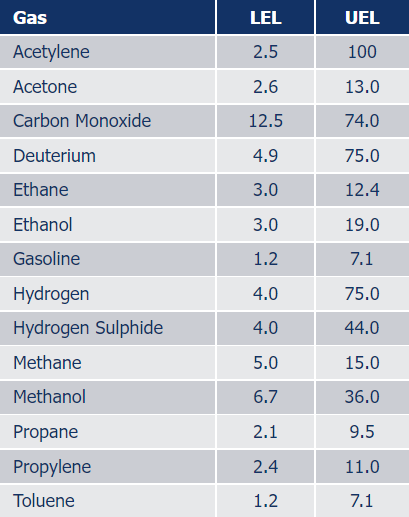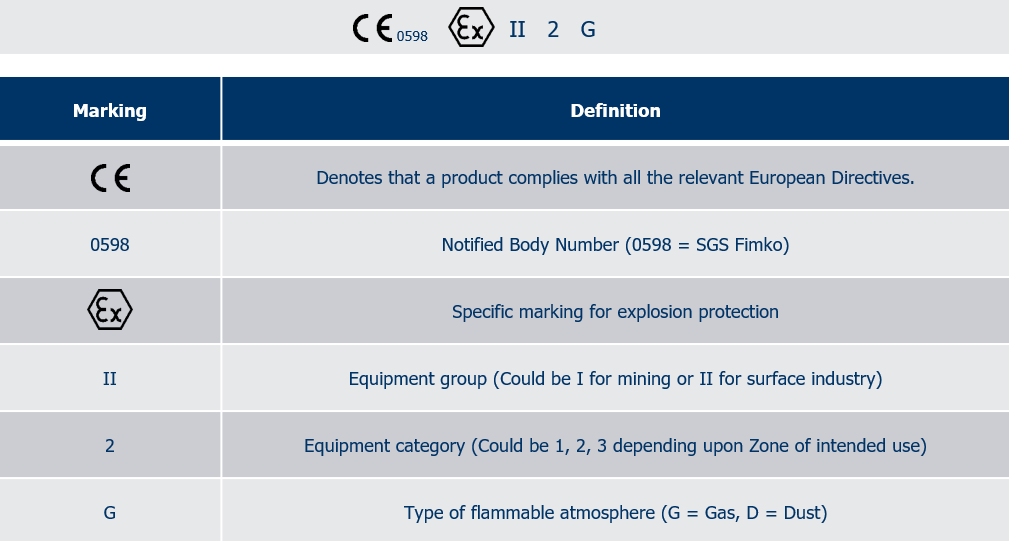
An introduction to hazardous areas and ATEX-approved trace moisture and oxygen sensors
Late in the evening of 10th December 2005, a pipeline delivery of unleaded petrol with a 10% butane mix began to be pumped into Tank 2 in Bund A at the Buncefield oil storage and transfer depot in the south of England. As the tank began to fill, the safety level systems failed, allowing the petrol to overflow into the bund from where a cloud of fuel and air vapor rapidly overtopped the bund wall and spread across the surrounding tank farm and onto a nearby industrial estate.
At 06:01 on Sunday 11th, the first of a series of explosions took place, probably triggered by a spark from an electrical generator. The explosions continued and caused a huge fire that engulfed more than 20 large storage tanks.
Five days later, the emergency services eventually extinguished the last of the fires, leaving 43 people injured, the depot and many surrounding houses and industrial buildings destroyed or badly damaged, and a final bill that has been estimated at £1 billion.
What is a hazardous area?
The Buncefield incident is one of many that have occurred in different industries around the world in recent years. It serves to highlight what can go wrong in areas that are defined by the IEC as hazardous: i.e., ‘an area in which an explosive atmosphere is present, or may be expected to be present, in quantities such as to require special precautions for the construction, installation and use of equipment’.
Hazardous areas can be found in many different industries, wherever there is a combination of oxygen (typically 21% in air), a combustible material and a potential source of ignition. These include the oil and gas sectors, where highly flammable materials are being processed, as well as applications where high concentrations of suspended dust are present, such as food, pharmaceutical and mining, or manufacturing where volatile chemicals must be handled.
Flammable gases
Flammable gases like acetylene, acetone, and hydrogen have specific lower and upper explosive limits (LEL and UEL), dictating their concentration range for forming an explosive atmosphere.

Lower and Upper Explosive Limits (LEL and UEL) for flammable gases
For example, a mixture of air and 50% hydrogen is explosive, whereas 3% hydrogen is too lean, and 76% hydrogen is too rich to form an explosive mixture.
Directives and Standards
The potential risks associated with the applications outlined above have led to the introduction of rigorous international directives and standards, including ATEX, IECEx, NEC/CEC, EAC, JPEx, PESO, and KCs. These directives set out the criteria to which equipment must conform if it is to be installed and operated in hazardous areas. They also define different categories of equipment and zones based on the degree of risk. The ATEX directive, for example, defines methods of protection in hazardous areas such as flameproof, increased safety, intrinsically safe and optical radiation, with hazardous areas being divided into three zones.
Typical hazardous area protection methods (ATEX/IECEx)
Flameproof (Ex d): This requires a mechanical construction – typically an enclosure – that ensures that the ignition of a hazard inside the enclosure remains contained and will not transmit to and ignite the atmosphere outside the enclosure.
Increased safety (Ex e): This provides a higher level of safety, requiring an impact-resistant enclosure for electrical equipment, which ensures that the contents will not produce a spark, temperature or current creepage that could ignite the external flammable atmosphere in a hazardous area zone, location or workspace.
Intrinsically safe (Ex i): This defines equipment and wiring that must be incapable of releasing electrical or thermal energy, under normal or abnormal conditions, that can cause ignition of a specific hazardous atmospheric mixture in its most easily ignited concentration.
Optical radiation (Ex op is): Equipment that uses optical radiation must be designed to eliminate the risk of radiation being absorbed by a thermally conductive surface, which could lead to a rise in temperature that might exceed the ignition point of a surrounding explosive atmosphere.
Hazardous gas/dust zone classification
For more details about ATEX and IECEx, see our blog, Understanding ATEX and IECEx.
Trace moisture and oxygen measurement sensors in hazardous areas
Our range of trace moisture and dew-point sensors and transmitters, plus oxygen sensors, are frequently used in hazardous areas, where they provide critical measurements that are vital for process and energy efficiency, safety, quality control and regulatory compliance.
Our products are accredited to multiple hazardous area standards, while providing exceptional levels of stability, accuracy and repeatability, with minimal drift, ease of use and the peace of mind that comes with full technical and customer support. To learn more, view our full range of trace moisture and dew-point measurement products.
With 50 years’ experience in the development of moisture, dew-point and gas measurement technology, we are the application experts for all hazardous applications. If you would like to discuss your requirements, please contact our team today.
Although there are several hazardous area standards, one of the most common is the European ATEX directive. The acronym incorporates two European directives covering both hazardous area equipment and the working areas within which it is to be used.
Devices that conform to the ATEX directive must be marked accordingly and should appear as a sequence of characters, as shown in the chart below.

ATEX Markings
Related Information
Read more about the Buncefield incident
Related Blogs
Why You Need Hazardous Area Rated Humidity & Temperature Instrumentation
Achieving Pure Nitrogen Production On-Site Safely for Hazardous Areas
Related Products
Intrinsically Safe Compact Oxygen Transmitter - Minox-i
Explosion Proof Moisture Transmitter - Easidew PRO XP
Compact Oxygen Transmitter - SenzTx
Intrinsically Safe Dew-Point Transmitter - Easidew I.S.
Cost-Effective Oxygen Transmitter - OXY-FLEX Series
Zirconia Oxygen Sensor System - Combustion
Zirconia Oxygen Sensor System
Want to see more information like this?
Sign up to one of our Industry newsletters and you’ll receive our most-recent related news and insights all directly to your inbox!
Sign Up